- Call us: 01444 237070
- Contact Us
- Stores
- Sign In / Register
-
- Back
- Used Cameras
- Used Accessories
- Used Lenses
- Used Video
- Used Film Equipment
- Used Stock Alert
- Used Blank Test
- Sell or Part Exchange
- Used Clearance
- Recently Added Used Equipment
- Park Picks
- All Used Black Friday Deals
- Faulty
- Trade-In
- Blog
- New in
- Call us
- Contact us
- Stores
- Sign in
- Categories
- Tips & Inspiration
- Reviews
- News
- Events
- Features
- Buying Guides
- Competitions
DJI Mavic 4 Pro Review
DJI has launched the next-generation flagship Mavic 4 Pro drone, which is for professional creators who need the ultimate image quality for aerial content creation. Its headline feature is a brand-new 100MP Hasselblad main camera, which DJI claims delivers image quality on par with Micro Four Thirds systems. The camera drone also features an upgraded triple-lens system, as well as a host of updated technologies for enhanced imaging performance and flight safety.
This in-depth DJI Mavic 4 Pro review explores all the key features and upgrades, including image quality, flight handling, new safety systems, and how it compares with previous models. Whether you’re considering upgrading from an older aircraft or comparing it with the Mini 4 Pro or Air series, this Mavic 4 pro review will help you understand what makes this one of the most capable drones of 2025.
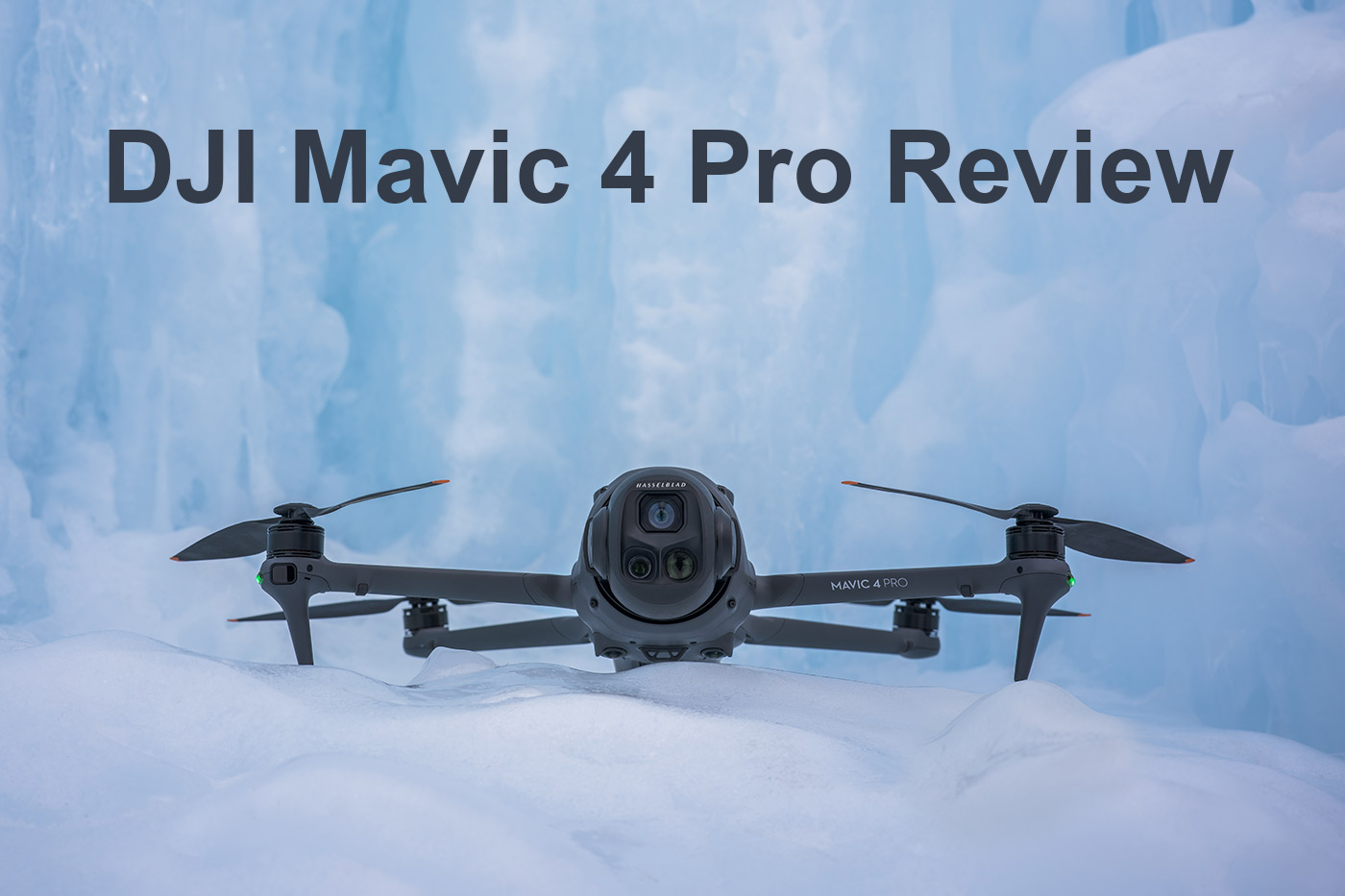
DJI Mavic 4 Pro Release Date and Price
The DJI Mavic 4 Pro was released on 13th May 2025, with three options available at launch. The standard Mavic 4 Pro costs £1,879.00, while the DJI Mavic 4 Pro Fly More Combo (RC 2) adds two extra batteries, propellers and a charging hub for £2,459.00.
Lastly, the premium DJI Mavic 4 Pro Creator Combo (RC Pro 2) includes a larger capacity 512GB internal SSD, 240W fast charger, thew new DJI RC Pro 2 controller with a 7-inch Mini-LED display, and additional accessories. This flagship combo costs £3,209.00, which is competitively priced for high-end productions.
Next let’s look at what’s new in the DJI Mavic 4 Pro triple camera system
.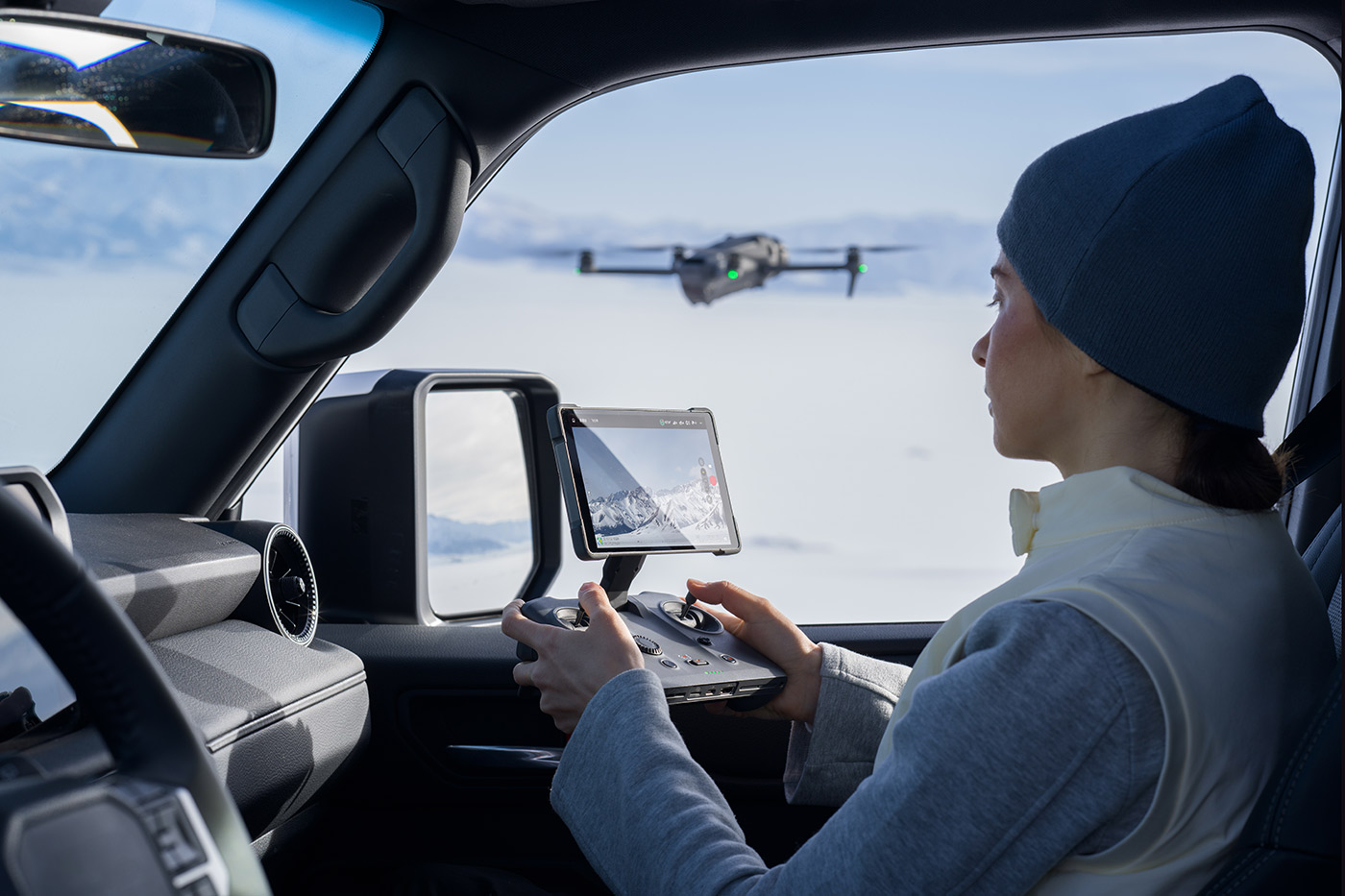
Camera and Imaging Performance
At the heart of the DJI Mavic 4 Pro is a newly developed 100MP 4/3 CMOS Hasselblad camera, which is the most powerful imaging system in any Mavic series drone to date. This new sensor captures 100MP photos, as well as 6K/60fps HDR video, significantly outperforming the 20MP sensor from the Mavic 3 Pro. Thanks to Dual Native ISO Fusion, the camera is able to capture around 16 stops of dynamic range when shooting in D-Log mode. This is seriously impressive and preserves higher levels of highlight and shadow detail in your footage, vs 12-14-stops in the previous model.
The lens itself has also been reengineered with an f/2.0–f/11 variable aperture and improved edge-to-edge sharpness. Users can capture 10-ray starburst effects straight out of camera, while low-light performance is noticeably improved due to the wider aperture and enhanced sensitivity.
Backing up the main camera are two upgraded telephoto units. The 70mm medium tele camera features a 1/1.3-inch sensor with 48MP resolution, which is ideal for more cinematic subject separation and medium tele shots.
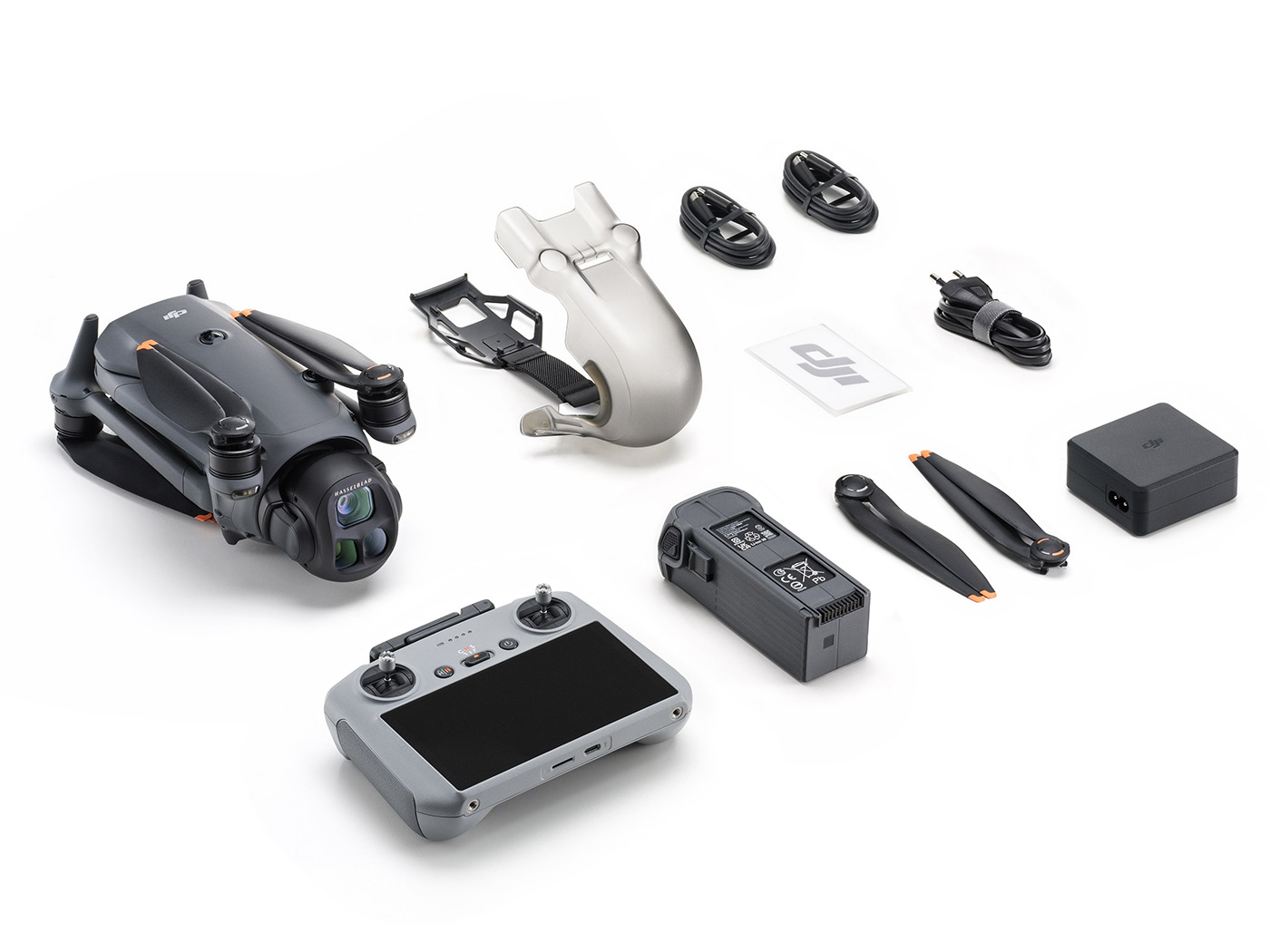
The 168mm telephoto camera now uses a larger 1/1.5-inch 50MP sensor with a brighter f/2.8 aperture, which is capable of producing cleaner, more detailed results even at these longer ranges. Both cameras support 4K/60fps HDR and slow-motion video up to 120fps (100fps on the 168mm lens). The tele lens even has a built-in panoramic mode for easy pano creation without any stitching required.
DJI’s flagship triple-camera system supports consistent 10-bit D-Log, D-Log M, and HLG colour profiles across all focal lengths, making it easier to match footage in post-production. Whether you shoot landscapes, portraits, wildlife, vehicles or architecture, the Mavic 4 Pro delivers imaging performance that genuinely does rival Micro Four Thirds cameras, creating a significant advantage for aerial content.
Next let’s explore how the aircraft and piloting experience has been updated.
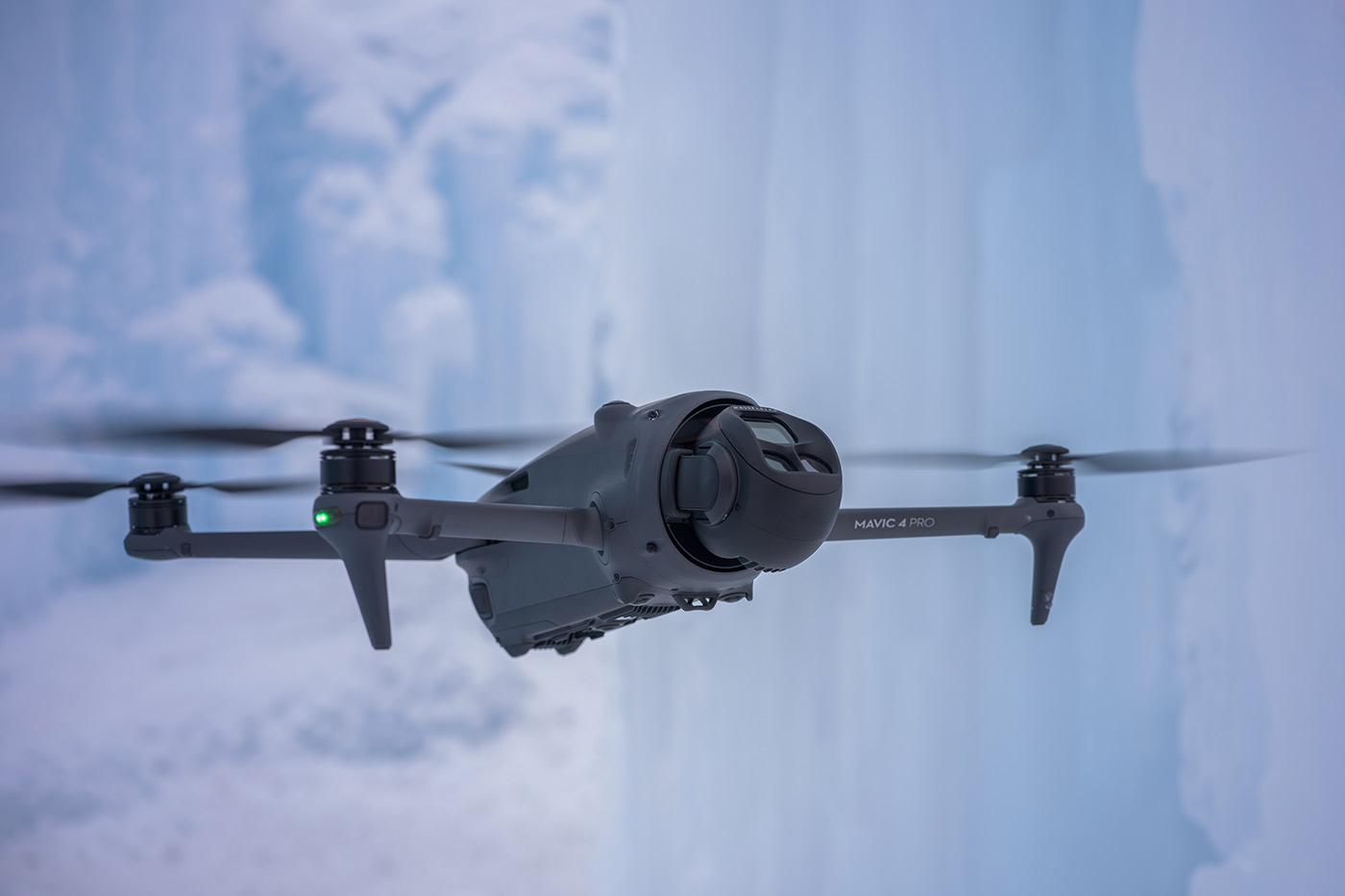
Gimbal Design and Flight
One of the most noticeable changes to the Mavic 4 Pro is the introduction of DJI’s new Infinity Gimbal. Unlike conventional three-axis gimbals, this new architecture enables full 360° roll-axis rotation, opening up much more creative options that were previously only possible with complex post-production or FPV systems.
It also supports 70° upward shooting, which is ideal for filming tall buildings or dramatic natural features without distortion or obstruction from the aircraft itself. This isn’t just a gimmick either, DJI has added control via the dial and included a new ‘Rotate’ QuickShot sub-mode to make use of the gimbal’s movement during flight.
Flight characteristics have also been refined and DJI claims a drag reduction of up to 19% compared to the Mavic 3 Pro, which is thanks to an optimised body shape, streamlined arms and motor mounts, as well as new propeller clamps. The updated aerodynamic design coupled with a more powerful 95.3Wh Intelligent Flight Battery contributes to achieving flights as long as 51 minutes of forward flight. This reduces to around 45 minutes in hover mode, depending on wind and altitude. In testing, forward flight distance reached a maximum of 41 km at a constant 32.4kph in calm conditions.*

That kind of range brings more risk, which is where DJI’s new 0.1-lux Nightscape Omnidirectional Obstacle Sensing and forward-facing LiDAR come in. This upgraded safety system allows the drone to detect and brake around obstacles even in near-total darkness, which is something that simply wasn’t possible before.
It’s smart enough to climb automatically if a tall building is in the way during Return to Home, and with Visual SLAM (VSLAM) tech, it can even remember flight paths and return safely without a satellite signal, which is particularly useful if you’re flying from a rooftop, balcony, or down a canyon.
*Based on DJI’s lab testing in windless conditions at sea level, with Obstacle Avoidance set to Brake.
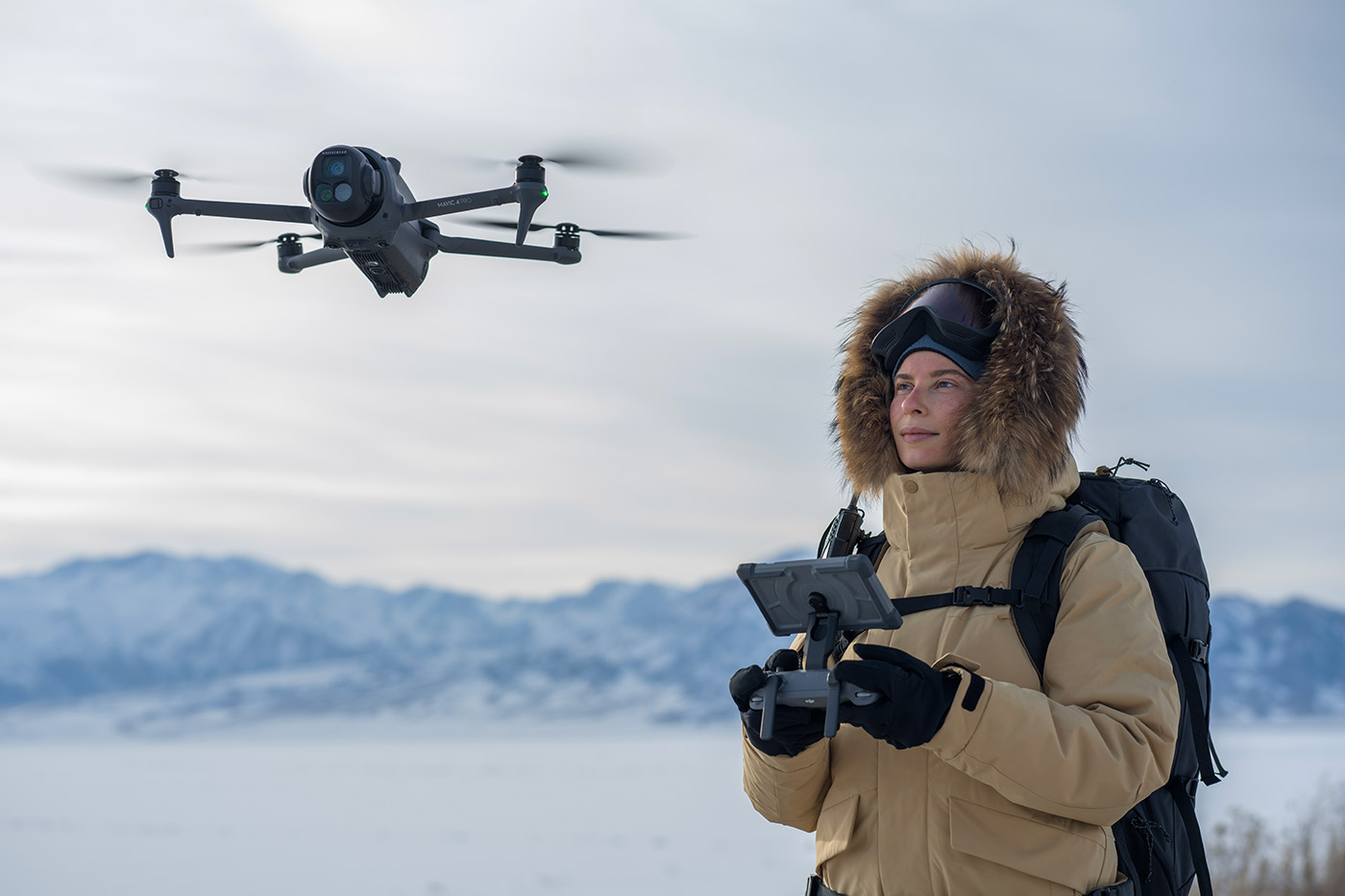
Video Transmission and Remote Controllers
The DJI Mavic 4 Pro also features the newly developed O4+ video transmission system, which is another significant upgrade over the O3+ system from the Mavic 3 series. This supports 10-bit HDR live video from a maximum range of up to 30 km (FCC) in low-interference conditions, while delivering more stable, high-quality feeds for longer flights regardless of the environment. In practice, the range will of course vary, and DJI estimates a 6-15 km range in suburban areas and around 1.5–6 km in cities, depending on interference levels.
One of the major benefits of O4+ is its optimisation for multi-drone operation. In locations where multiple DJI drones are in use such as landmarks, festivals, or film sets, O4+ reduces the chance of signal crossover or any dropout. It’s also better able to handle short-term blockages, like briefly flying behind trees or buildings.
Controlling the drone is easier than ever thanks to two RC options. The familiar DJI RC 2 ships with the standard drone and Fly More versions. It features a 5.5-inch 700-nit display, built-in DJI Fly app, and a streamlined design with built-in antennas.
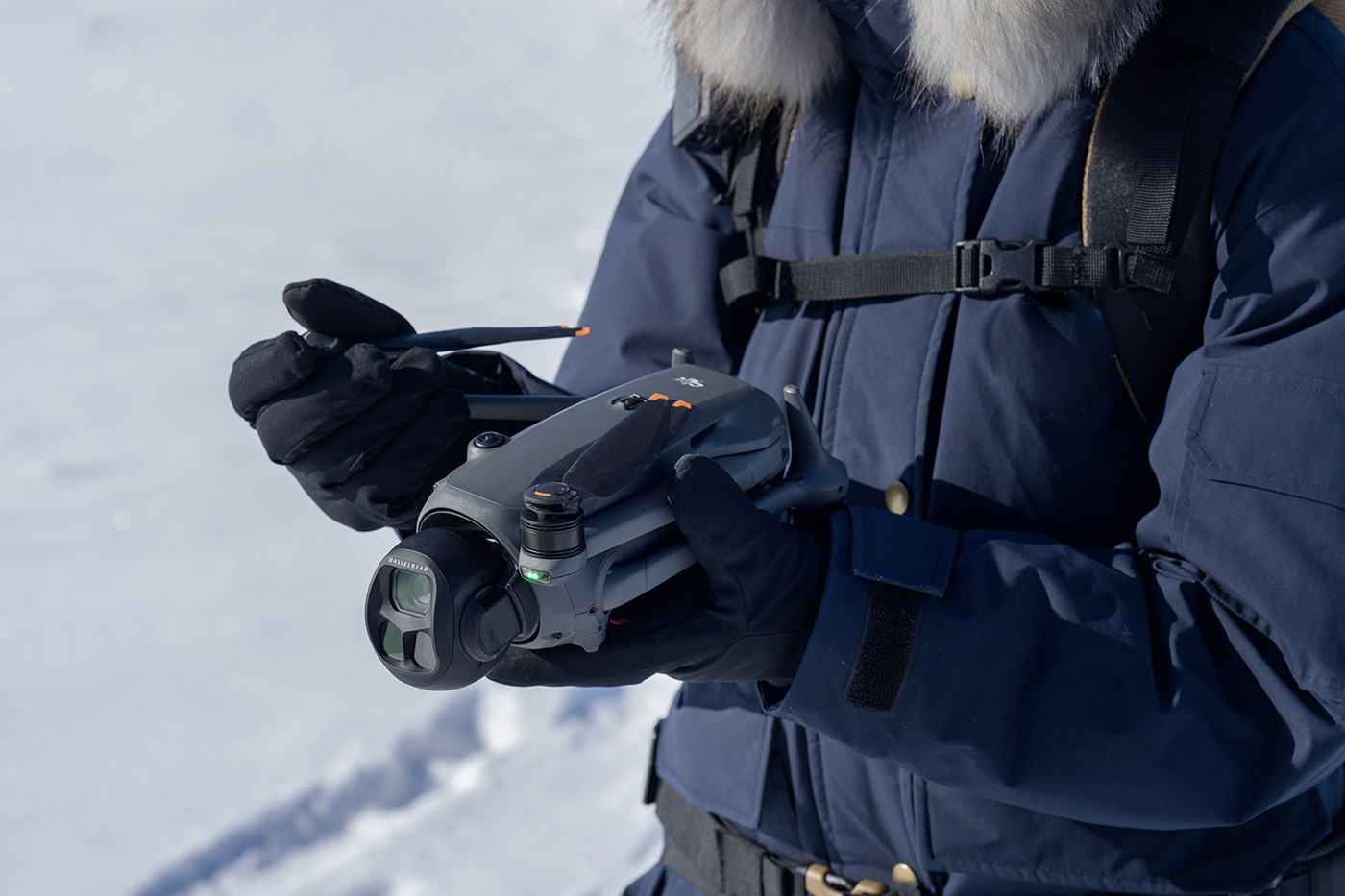
Moving up to the premium DJI RC Pro 2, and things get seriously impressive. This RC is exclusive to the Creator Combo, and offers a bright 7-inch 2000-nit Mini-LED screen, built-in mic, and collapsible joystick system. The screen auto-rotates for vertical monitoring and tilts for comfortable viewing in bright daylight conditions. It also supports third-party app installation, includes 128GB of internal storage, and an HDMI output for live streaming or monitoring, encroaching into studio set territory. It even features DJI’s latest multi-beam high-gain antenna for the best possible performance from the new O4+ transmission.
DJI is not done there, with plenty more upgrades to come.
Battery Life, Charging and Internal Storage
One of the biggest quality-of-life improvements in the DJI Mavic 4 Pro is overall workflow efficiency, which starts with a bump in battery power. A new 95.3Wh Intelligent Flight Battery extends flight time to a maximum of 51 minutes in ideal forward flight conditions, or 45 minutes while hovering. These come from DJI’s controlled tests at 9 m/s in a windless environment, but even in more typical conditions, pilots can expect noticeably longer airtime than from the previous gen.
Charging has also been updated with a new Mavic 4 Pro Parallel Charging Hub. When paired with the DJI 240W Power Adapter, the multi-hub charges one battery in about 51 minutes, or three simultaneously in 90 minutes. The hub prioritises the lowest battery first, then charges in parallel once levels are evened out, which is a very nice touch. The hub will even work as a 100W power bank, drawing from the battery to top up your phone or laptop while on location, adding to the convenience of the entire setup.
Internal storage has received an upgrade too. The standard Mavic 4 Pro which features in the associated Combo includes 64GB of internal memory, with no memory card required. The Creator Combo version upgrades this to a 512GB of high-speed SSD, which facilitates ALL-I 4:2:2 encoding for higher quality, less compressed video footage.
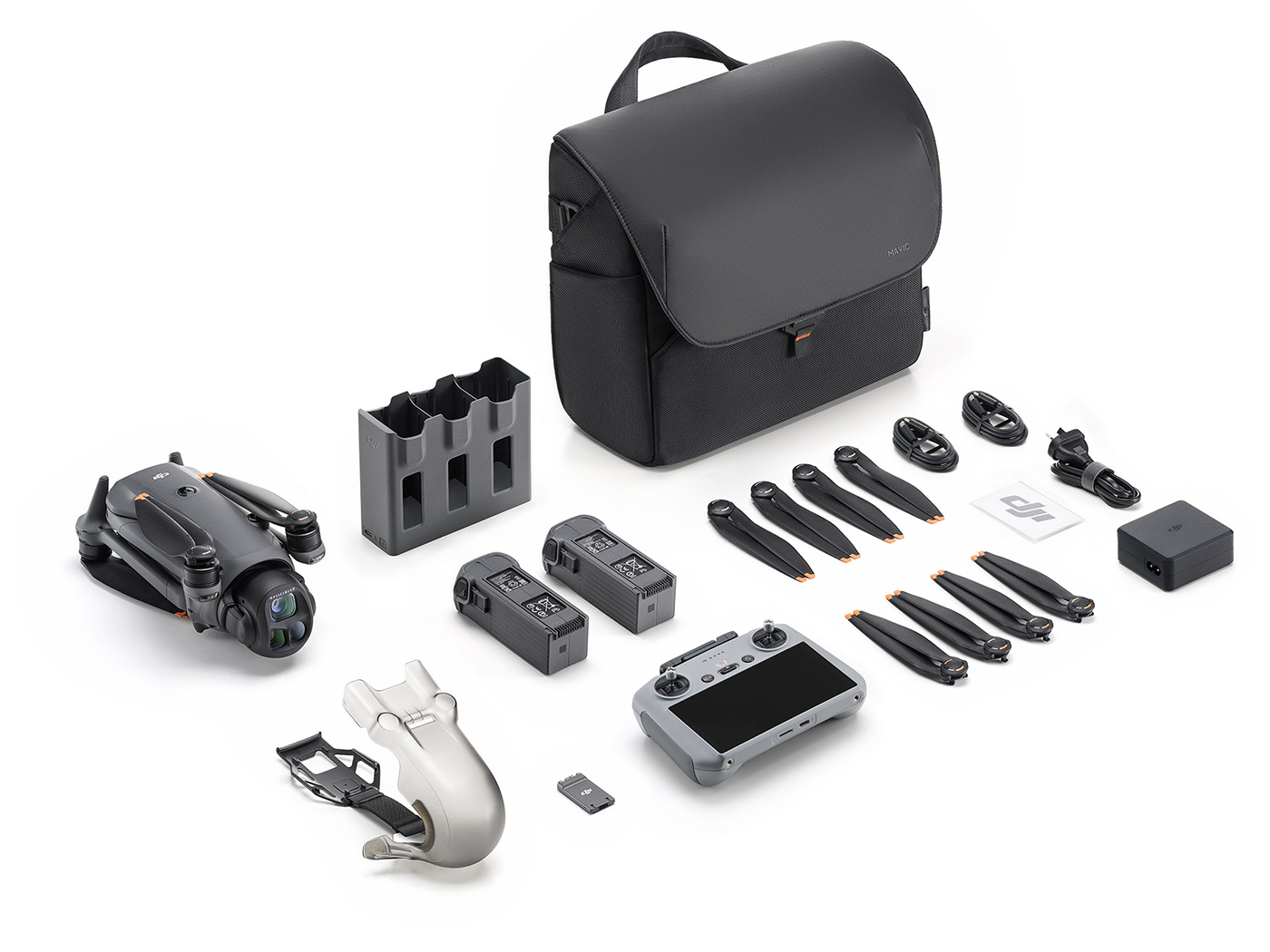
File transfer is now quicker thanks to Wi-Fi 6 QuickTransfer, allowing you to move 100MP RAW stills or 6K video files at speeds of up to 80MB/s, all without powering up the drone itself! The DJI Fly app will continue downloading data in the background, and direct USB-C cable transfer is supported for external drives and post processing.
Intelligent Shooting, Tracking and Return Systems
The DJI Mavic 4 Pro doesn’t just fly for longer or capture better image quality, it’s also able to more intelligently track, avoid and return. ActiveTrack 360° is responsible for these improvements, which is a system that enhances earlier FocusTrack systems with improved subject recognition, more cinematic movement, and better low-light performance.
Using the on-screen dial, users can orbit, pull away, or spiral around people or vehicles with minimal manual input. In Auto mode, the drone even selects more aesthetically pleasing backgrounds when circling a subject, based on vision sensor data.
DJI has also improved small-object detection, halving the minimum target size to just 5% of the frame, which is enough to reliably track a vehicle from around 200m or a person at 50m.* Recovery is better too, which means that if a subject briefly disappears behind and obstacle, the system can re-identify and lock on faster when it reappears.
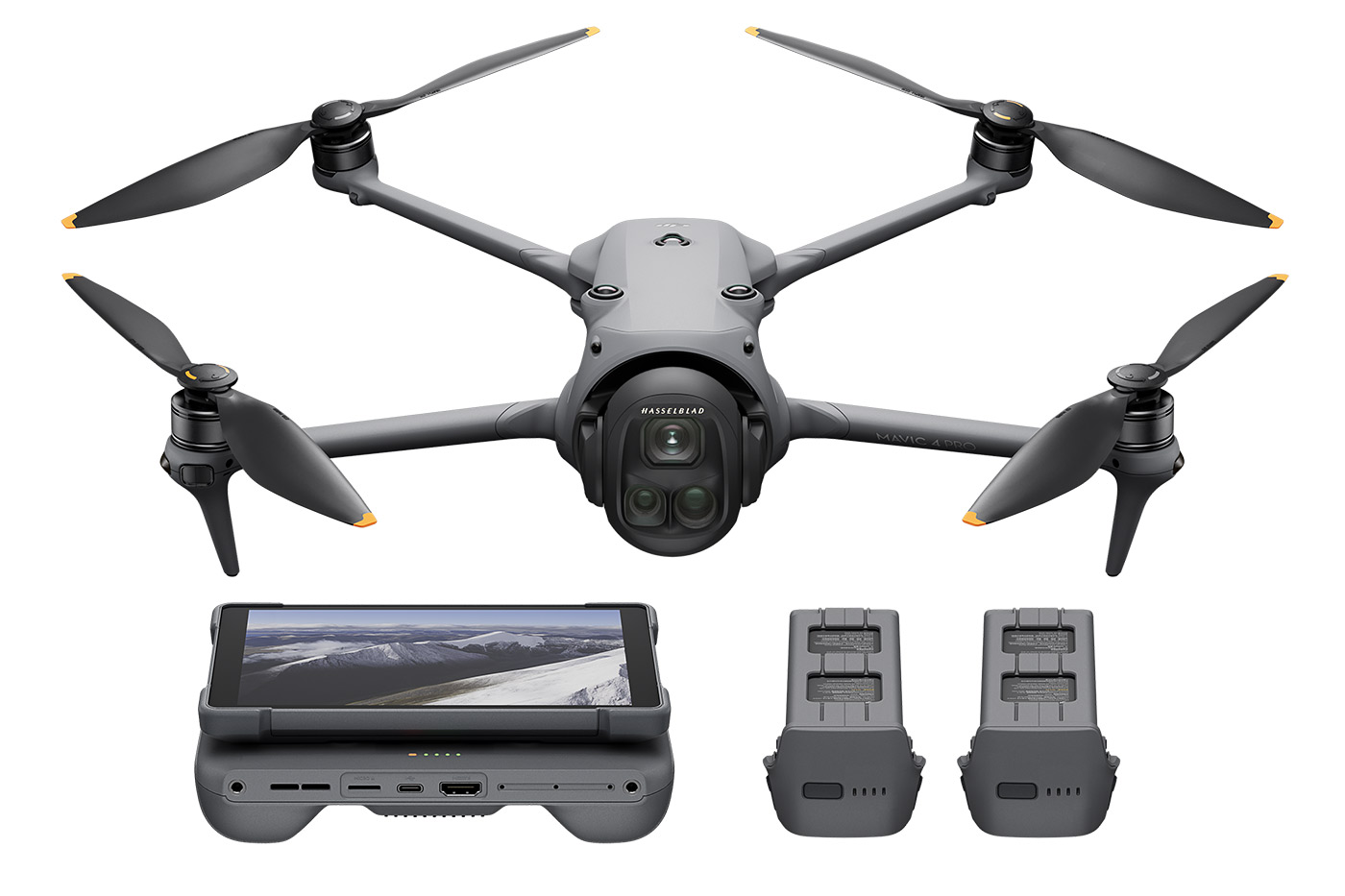
For content creators who need to capture footage in tight or unpredictable environments, Subject Focusing is another major upgrade that will come in very handy. All three cameras support people autofocus, with consistent exposure and colour temperature. This ensures seamless transitions across cameras when filming in Log profiles.
DJI Mavic 4 Pro Standard vs Combo Box Contents Comparison
The table below shows what’s in the box of the three options available from Park Cameras, enabling you to choose the best combo for your needs.
|
Item |
|||
|
DJI Mavic 4 Pro 64 GB |
1 |
1 |
N/A |
|
DJI Mavic 4 Pro 512GB |
N/A |
N/A |
1 |
|
DJI RC 2 |
1 |
1 |
N/A |
|
DJI RC Pro 2 |
N/A |
N/A |
1 |
|
1 |
3 |
3 |
|
|
1 |
4 |
4 |
|
|
DJI Mavic 4 Pro Storage Cover |
1 |
1 |
1 |
|
USB-C to USB-C Data Cable |
2 |
2 |
N/A |
|
USB-C to USB-C High-Speed Data Cable |
N/A |
N/A |
1 |
|
DJI 100W USB-C Power Adapter |
1 |
1 |
N/A |
|
DJI Mavic 240W Power Adapter |
N/A |
N/A |
1 |
|
DJI Mavic Shoulder Bag |
N/A |
1 |
1 |
|
N/A |
1 |
1 |
Best Mavic 4 Pro Accessories
To get the most from your DJI Mavic 4 Pro there are several drone accessories that will enhance flight time, safety, and shooting versatility. At the top of the list is the DJI Mavic 4 Pro Intelligent Flight Battery, which provides up to 51 minutes of airtime per charge.
If you get additional batteries, it makes sense to add the DJI Mavic 4 Pro Parallel Charging Hub, which charges up to three batteries in just 90 minutes when used with the 240W power adapter, and also doubles as a 100W power bank for your mobile devices.
The DJI Mavic 4 Pro Electronic ND Filter is another essential new accessory, which enables precise exposure control for smooth, cinematic motion in bright conditions.
If you’re flying close to structures or indoors, a DJI Mavic 4 Pro Propeller Guard adds protection without increasing weight noticeably, while for day-to-day maintenance or spares, grab some DJI Mavic 4 Pro Propellers.
Summary
The DJI Mavic 4 Pro is a seriously impressive upgrade in virtually every aspect, delivering new creative opportunities for aerial filmmakers and content creators. With its redesigned 100MP 4/3 CMOS Hasselblad camera, DJI is pushing image quality into mirrorless territory, with huge 100MP stills and 6K/60p HDR video. The supporting 70mm and 168mm telephoto cameras are also more usable than previous generations, with improved apertures and sharper optics.
Flight time has bumped up to 51 minutes, and that’s supported by improvements to safety with better obstacle sensing, and smarter return capabilities. The Infinity Gimbal’s 360° motion also opens-up shots that weren’t possible with the Mavic 3 Pro or any Air series drone currently available.
Add faster charging, larger storage capacity and DJI’s most robust video transmission system to date, and the Mavic 4 Pro is the best ever drone for professional content, without moving to a Zenmuse or similarly expensive option.
Thinking of upgrading?
Visit our Trade-In page for a free quote on selling an existing drone or any other camera gear. You can use the value of the equipment against the price of the Mavic 4 Pro to make upgrading more affordable, fast, simple, and with expert support from our team.
Next we cover some FAQs to further help you decide whether this is the ultimate option for your own aerial content creation.
Mavic 4 Pro FAQs
What are the main improvements of the DJI Mavic 4 Pro compared to the Mavic 3 Pro?
Mavic 4 Pro introduces a 100MP 4/3 CMOS main camera capable of 6K/60fps HDR video, an upgraded telephoto lens with a larger 1/1.5” sensor and f/2.8 aperture, and a new Infinity Gimbal that supports 360° rotation and 70° upward shooting.
Flight time has been extended to up to 51 minutes, and DJI’s new O4+ video transmission system offers a maximum 30km range with 10-bit HDR. It also adds forward-facing LiDAR for enhanced obstacle sensing, including in near darkness, and supports Smart RTH even without a satellite signal.
Is the DJI Mavic 4 Pro waterproof?
No, the Mavic 4 Pro is not waterproof and should not be flown in rain or near water. If it gets wet, wait until the drone is completely dry before flying again.
What app does the DJI Mavic 4 Pro use?
The Mavic 4 Pro uses the DJI Fly app, which is pre-installed on the DJI RC 2 and DJI RC Pro 2 controllers. You can also download the app for free.
What are the benefits of forward-facing LiDAR?
LiDAR helps the Mavic 4 Pro detect obstacles in near-total darkness when the vision system is ineffective. It improves safety during night flights and return-to-home by detecting and avoiding obstacles that the camera-based system cannot see.
What should I be aware of regarding the LiDAR system?
The LiDAR system functions best in moderate ambient light. In very bright environments, its performance may be limited. Always keep the sensor clean, as dust or debris can affect obstacle detection accuracy.
How do I enable HDR mode on the Mavic 4 Pro?
HDR mode is automatically enabled in most shooting modes. However, it is not available in certain high-resolution stills or slow-motion video settings, such as 100MP stills or 2.7K vertical slow-motion video.
How does Dual Native ISO Fusion work?
The drone combines signals from two analogue gain circuits to expand dynamic range. Depending on the ISO setting and colour profile (Normal, D-Log, D-Log M, or HLG), the system switches between low and high gain to maximise detail and minimise noise. Note that it is not supported in 100MP stills or slow-motion video.
What is the C2 certification for in Europe?
DJI Mavic 4 Pro holds a C2 classification under the EU drone regulations, which defines its operational category and flying permissions within European airspace.
What is the transmission range of the O4+ video system, and does it vary by location?
Transmission range depends on interference. In optimal conditions, the Mavic 4 Pro can transmit up to 30km (FCC). In urban areas with strong interference, this may drop to around 1.5-6km. In obstructed environments or under CE/SRRC standards, the range may be lower.
Can DJI RC Pro 2 install third-party apps?
Yes. DJI RC Pro 2 supports third-party apps via the built-in browser or an optional microSD card. You should note that DJI takes no responsibility for security or compatibility issues caused by third-party software.
How does the Mavic 4 Pro Charging Hub work?
When used with the DJI 240W power adapter, the hub fully charges one battery in around 51 minutes or three in 90 minutes. It prioritises the lowest battery first, then charges all three in parallel.
Browse our range of drones today or head straight to the page to reserve the DJI Mavic 4 Pro, Mavic 4 Pro Fly More Combo (RC 2), or ultimate Mavic 4 Pro Creator Combo (RC Pro 2) to make the most of these new flagship features from DJI.
Share this post:
By Nick Dautlich on 13/05/2025
Nick Dautlich
Senior Content Writer and Product Reviewer
Nick Dautlich is the Senior Content Writer and Product Reviewer at Park Cameras, with over 15 years of photography experience. A Sony Imaging Professional and expert reviewer, Nick has worked with major brands such as Canon, Sony and Nikon. His work is also featured on Vanguard World UK’s website, Capture Landscapes, and Shutter Evolve. Nick’s photography includes National Trust projects and magazine covers and he is passionate about landscapes and storytelling. Nick also enjoys hiking and teaching his children about nature. Learn more on his profile page.
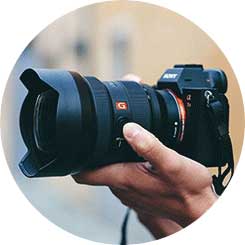
Trade in your old equipment
Fast and easy trade in service ensures your old gear is collected efficiently and you are paid quickly! It's very simple to trade in your unwanted photography gear. Just head over to our dedicated Sell or Part Exchange page, fill out the details, and we'll get back to you with an offer for your old gear. Take the cash, or put it towards the cost of your new gear. It's up to you! Find out more
sign up to the newsletter
Keep up to date on the latest photography news, events and offers. Sign up now